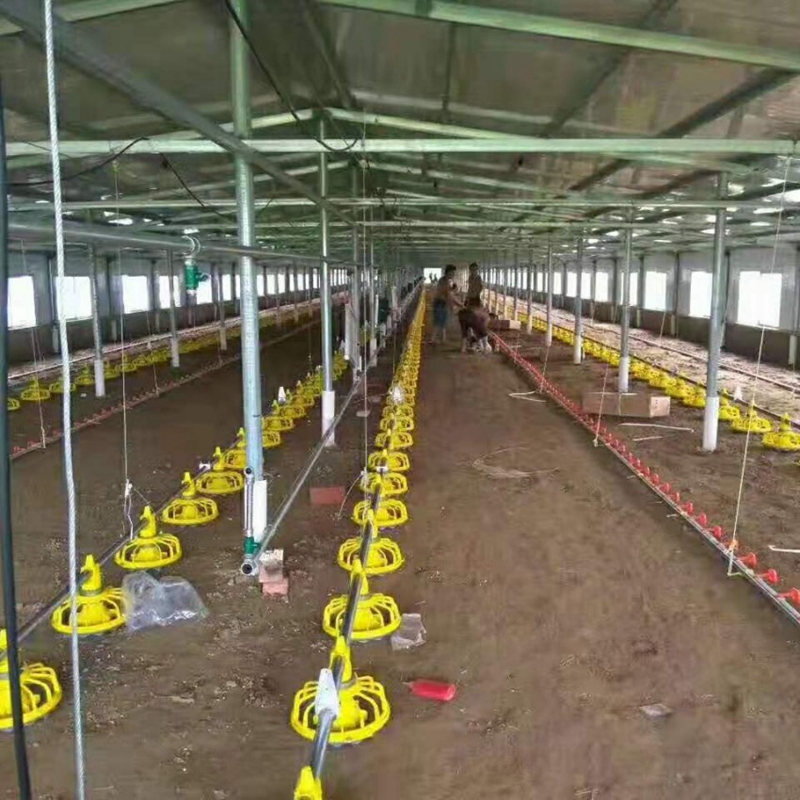exhaust fan
Dec . 12, 2024 12:32 Back to list
exhaust fan
Understanding Exhaust Fans Importance, Functionality, and Maintenance
Exhaust fans are crucial components in various environments, from residential kitchens and bathrooms to commercial buildings and industrial sites. They play a vital role in ensuring air quality, removing excess moisture, and maintaining a comfortable atmosphere. This article delves into the significance of exhaust fans, their working mechanisms, potential benefits, and maintenance tips to keep them functioning optimally.
The Importance of Exhaust Fans
Exhaust fans are designed to remove stale air, pollutants, and excess humidity from indoor spaces. In residential settings, they are commonly installed in kitchens and bathrooms. In kitchens, exhaust fans eliminate smoke, cooking odors, and airborne grease that can accumulate during food preparation. In bathrooms, they help expel humidity generated from showers, which can lead to mold and mildew growth if not properly ventilated.
In commercial and industrial settings, the need for effective ventilation is even more critical. Manufacturing processes, for example, can release harmful chemicals and vapors into the air. Exhaust fans help mitigate these risks by ensuring that contaminated air is vented outside, thereby protecting the health of workers and maintaining compliance with safety regulations.
How Exhaust Fans Work
Exhaust fans operate on a straightforward principle they create negative pressure within a space, pulling air (and its contained pollutants) out and allowing fresh air to flow in from other areas. This process is vital in maintaining a balanced atmosphere that is healthy and comfortable for occupants.
There are different types of exhaust fans, including
1. Wall-Mounted Exhaust Fans These fans are mounted on exterior walls and are common in kitchens and workshops. They draw air directly from the room to the outside.
2. Ducted Exhaust Fans Designed to be connected to a duct system, these fans can expel air from various rooms to a central exit point. This type is often used in larger buildings.
3. Inline Exhaust Fans Installed within ductwork, inline fans are beneficial for longer duct runs and quieter operation since the motor is away from the living space.
4. Bathroom Exhaust Fans Specifically designed to handle high humidity levels, these fans are often paired with a timer or humidity sensor to operate automatically.
Benefits of Using Exhaust Fans
The advantages of installing exhaust fans extend beyond mere comfort. Here are some notable benefits
exhaust fan

- Improved Air Quality By actively removing contaminants, exhaust fans significantly enhance the quality of indoor air, leading to better respiratory health
.- Humidity Control In areas with high moisture levels, exhaust fans help mitigate the risk of mold growth, thereby preserving the integrity of the building and protecting occupants' health.
- Energy Efficiency Modern exhaust fans are designed to consume less power while delivering high performance. This efficiency can lead to reduced energy costs.
- Increased Comfort By maintaining a balanced air exchange, exhaust fans contribute to a more pleasant indoor environment, free of odors and excessive heat.
Maintenance of Exhaust Fans
To ensure the longevity and efficiency of exhaust fans, regular maintenance is essential. Here are some tips
1. Cleaning Dust and grease can accumulate on fan blades and grilles, reducing efficiency. Regular cleaning with a damp cloth and mild detergent is recommended.
2. Inspections Periodically check for any unusual sounds or vibrations when the fan is in operation. If the fan isn’t working as expected, it may require professional inspection.
3. Check Ductwork Ensure that the ductwork is clear of obstructions. Blockages can impair performance and lead to increased energy usage.
4. Lubrication Some fans may require lubrication of their motors. Refer to the manufacturer's instructions for the appropriate maintenance schedule.
5. Replace Filters If your exhaust fan has a filter, replace it as recommended. Clean filters promote better airflow.
Conclusion
Exhaust fans are indispensable for maintaining indoor air quality across various types of buildings. By facilitating the removal of excess moisture, odors, and pollutants, they contribute to healthier and more comfortable living and working environments. Regular maintenance and understanding of their operational dynamics will ensure that these fans continue to function optimally, safeguarding health and promoting well-being. Whether in homes or workplaces, investing in suitable exhaust fans is a proactive step towards creating a better air quality experience for all occupants.
-
Automatic Feeding Line System-Pan Feeder Nipple Drinker|Anping County Yize Metal Products Co., Ltd.
NewsJul.29,2025
-
Hot Sale 24 & 18 Door Rabbit Cages - Premium Breeding Solutions
NewsJul.25,2025
-
Automatic Feeding Line System Pan Feeder Nipple Drinker - Anping County Yize Metal Products Co., Ltd.
NewsJul.21,2025
-
Automatic Feeding Line System Pan Feeder Nipple Drinker - Anping County Yize Metal Products Co., Ltd.
NewsJul.21,2025
-
Automatic Feeding Line System - Anping Yize | Precision & Nipple
NewsJul.21,2025
-
Automatic Feeding Line System - Anping Yize | Precision & Nipple
NewsJul.21,2025






